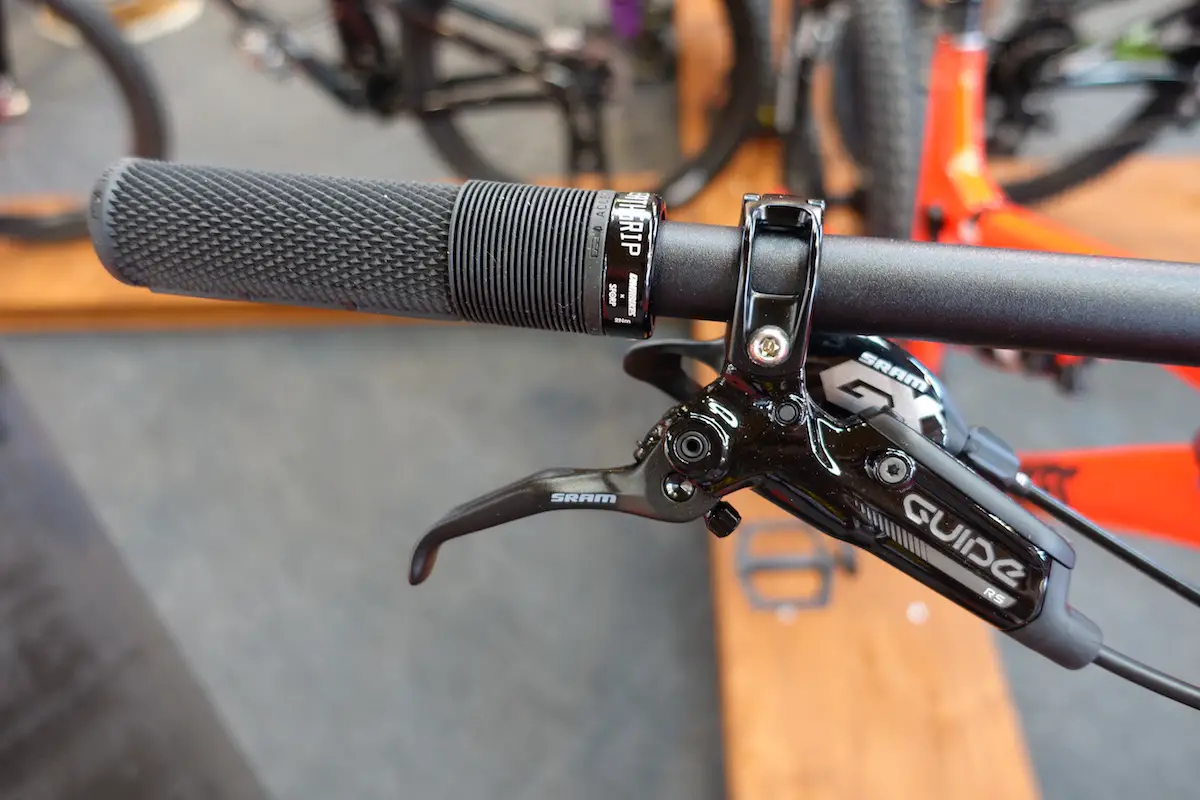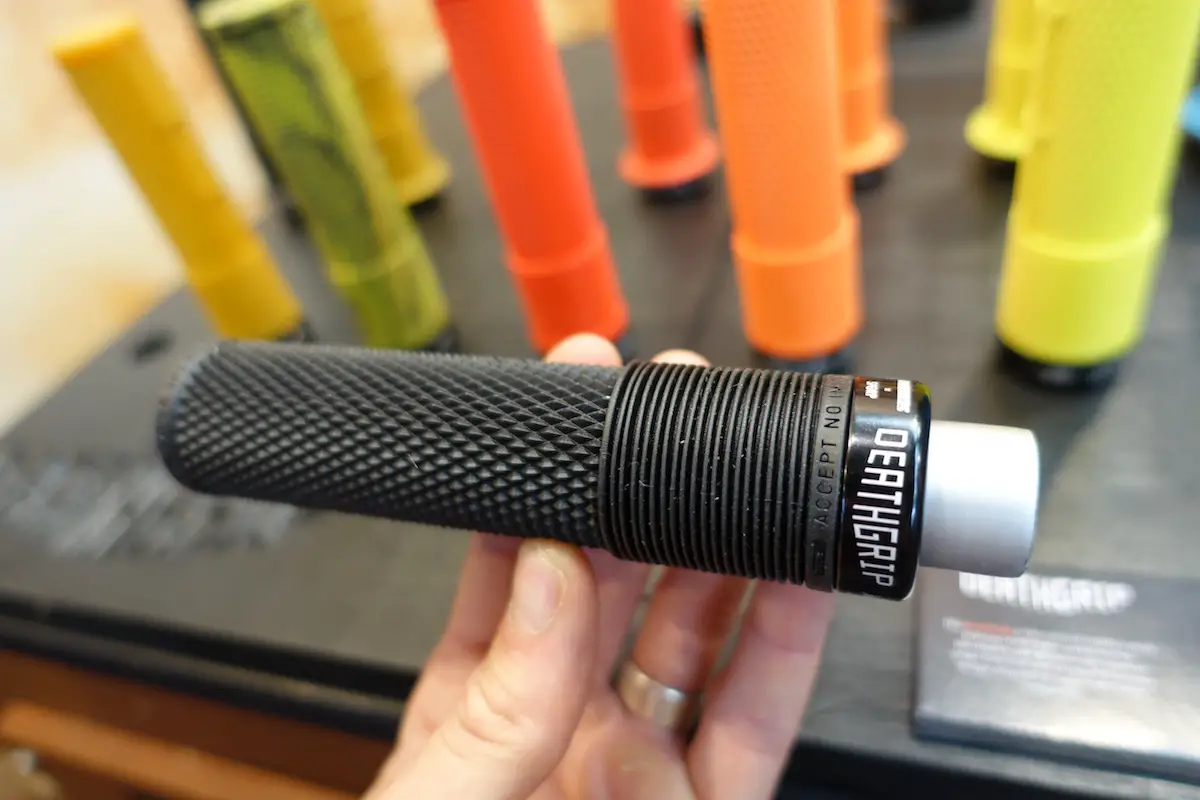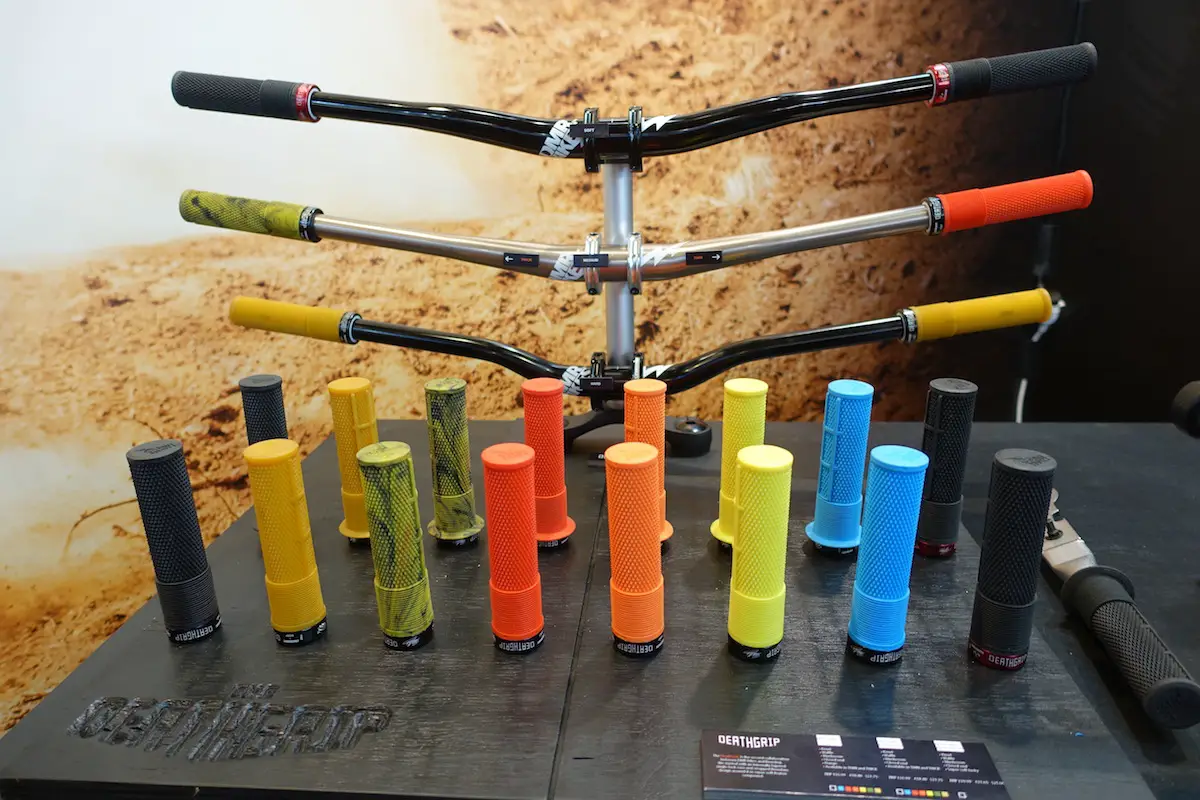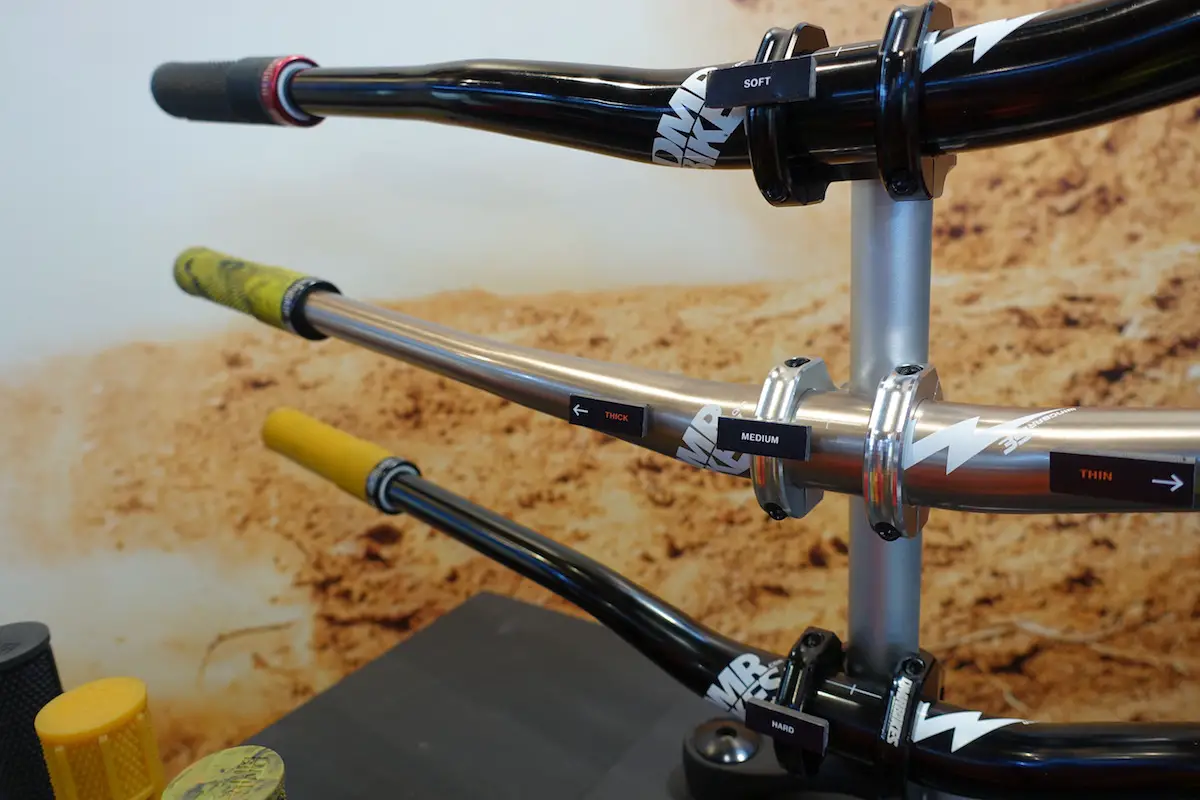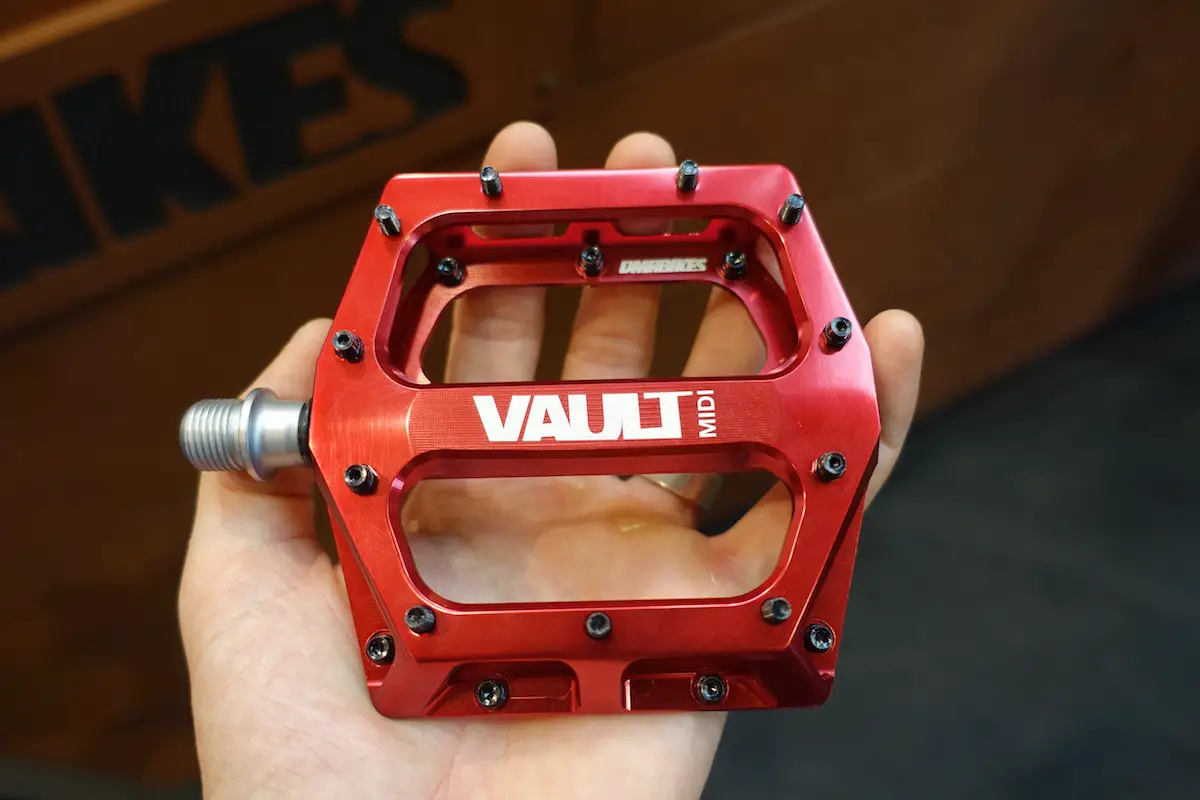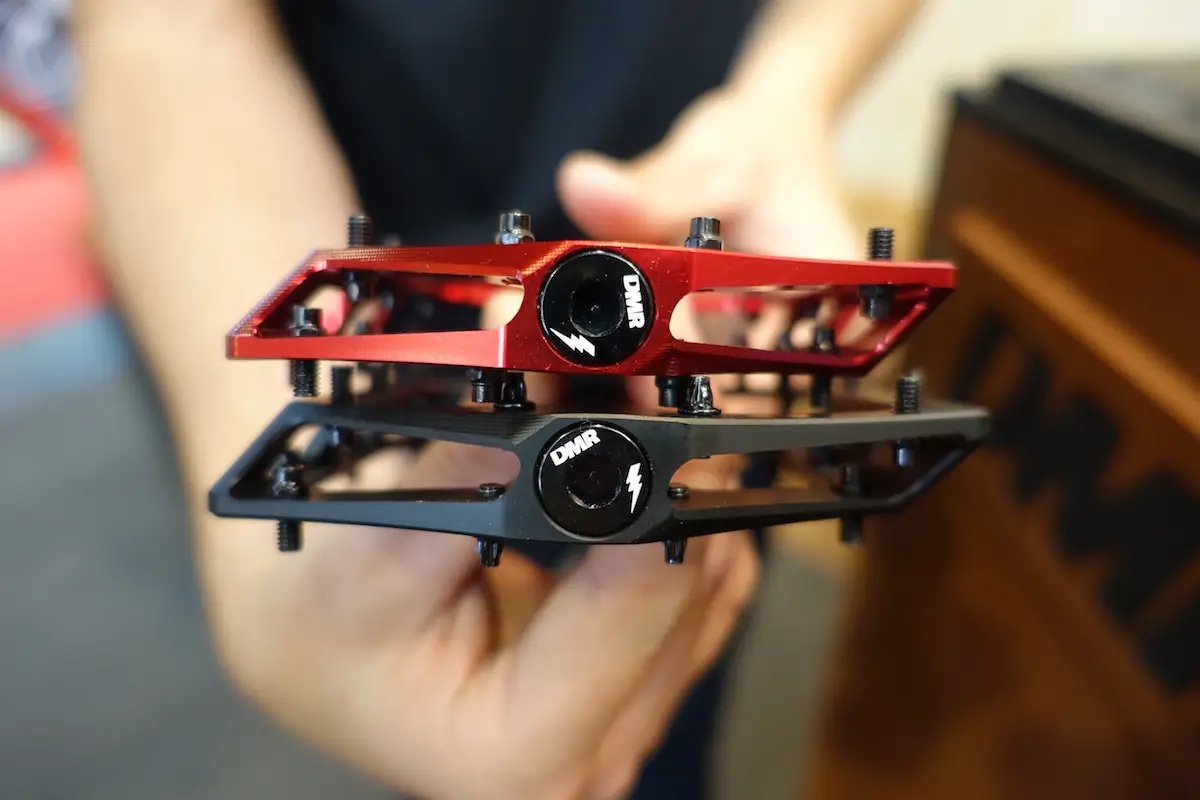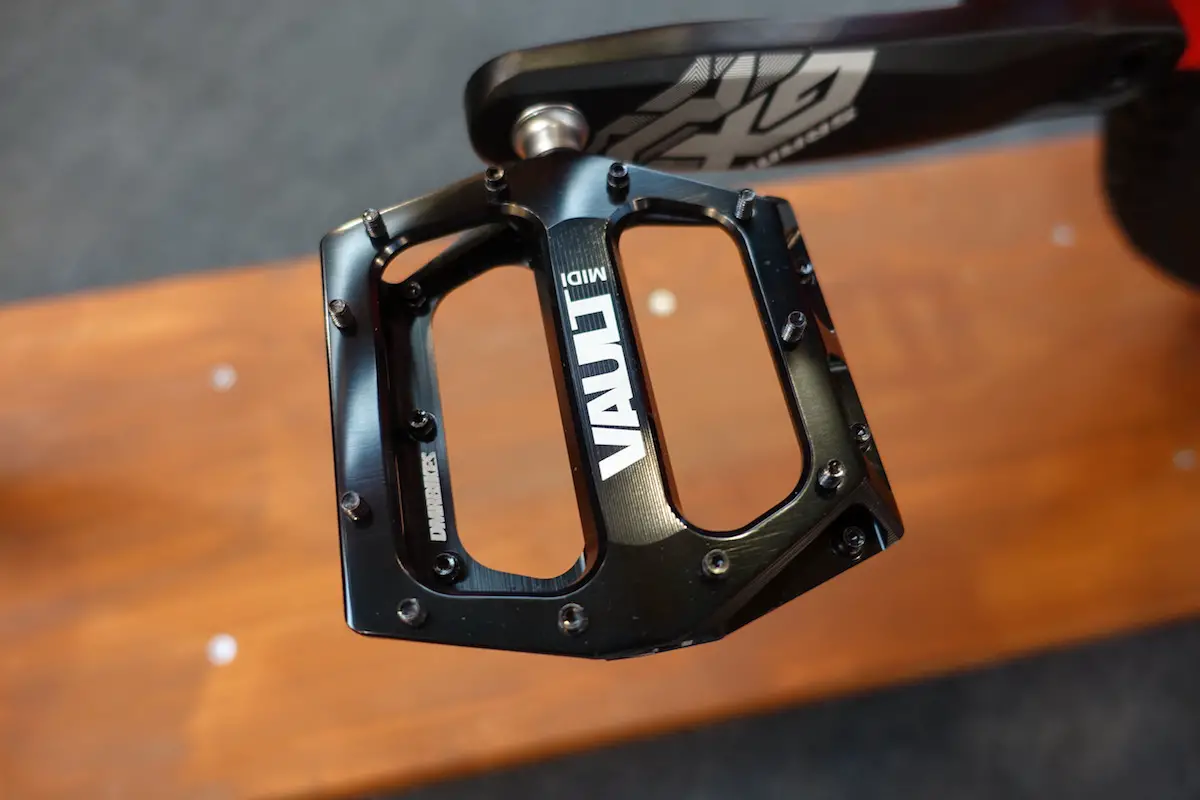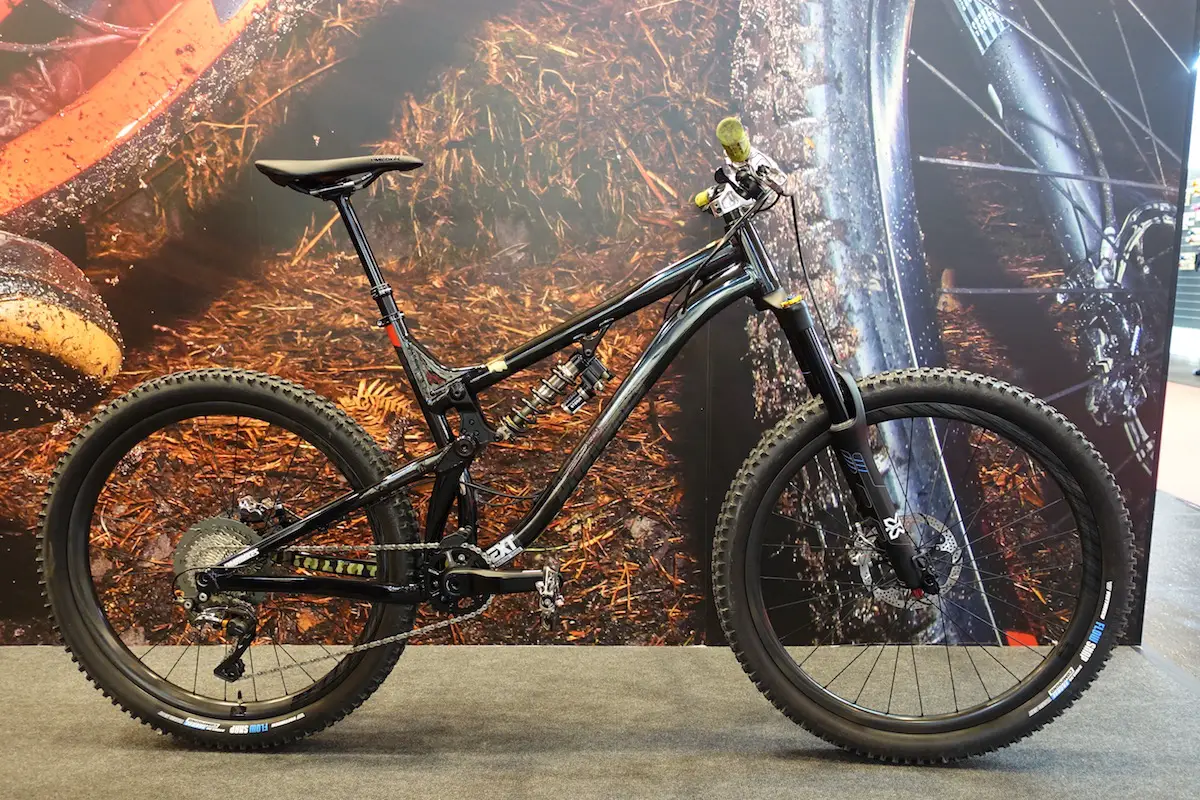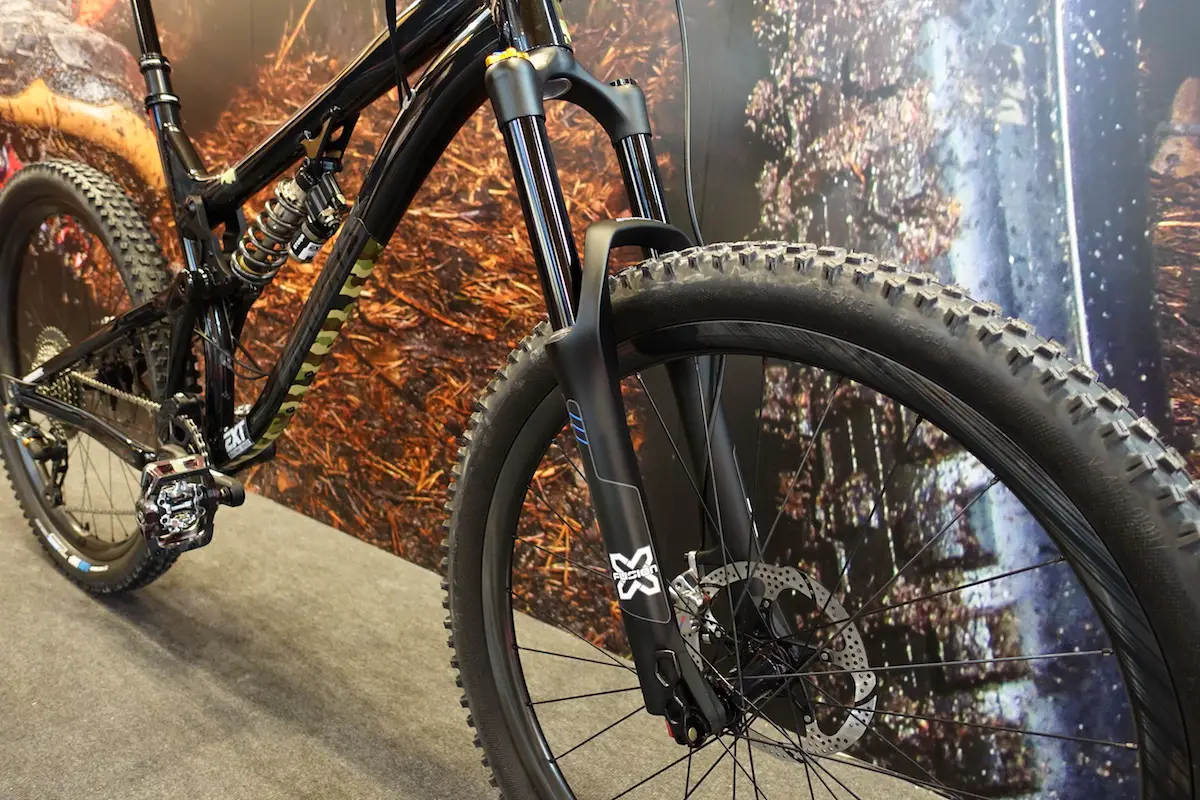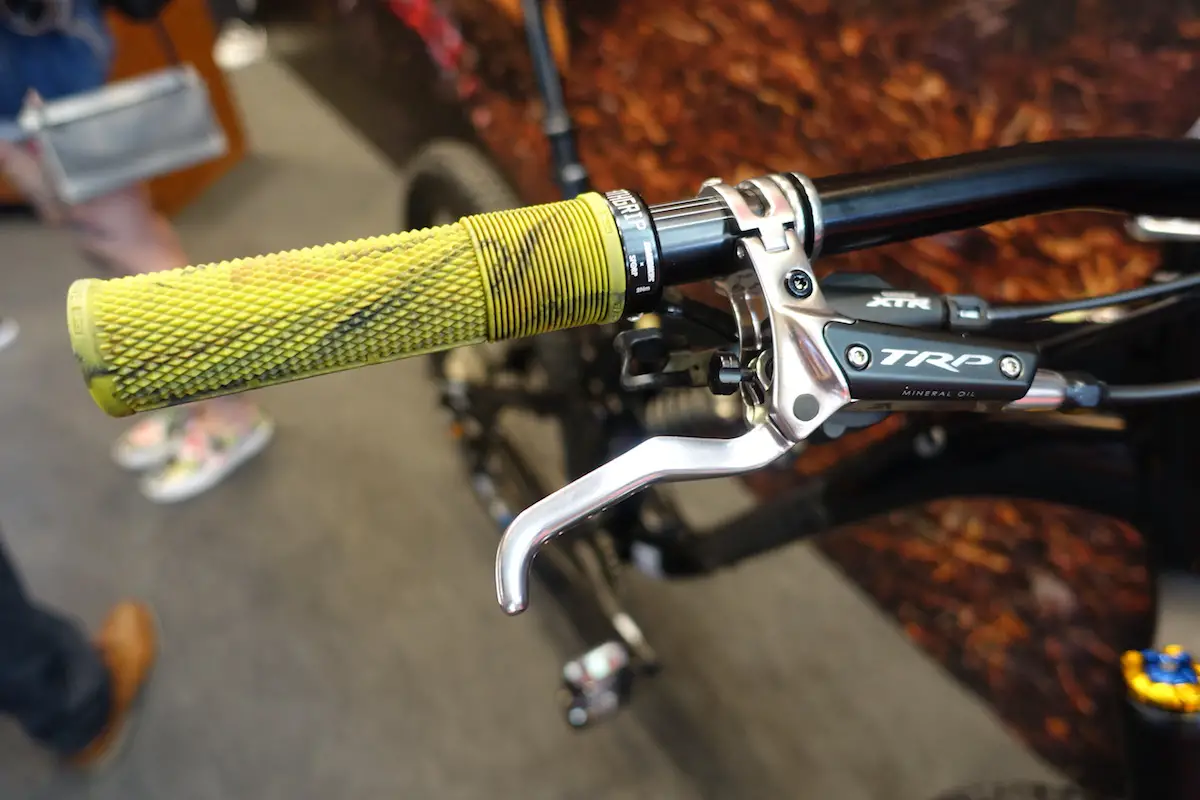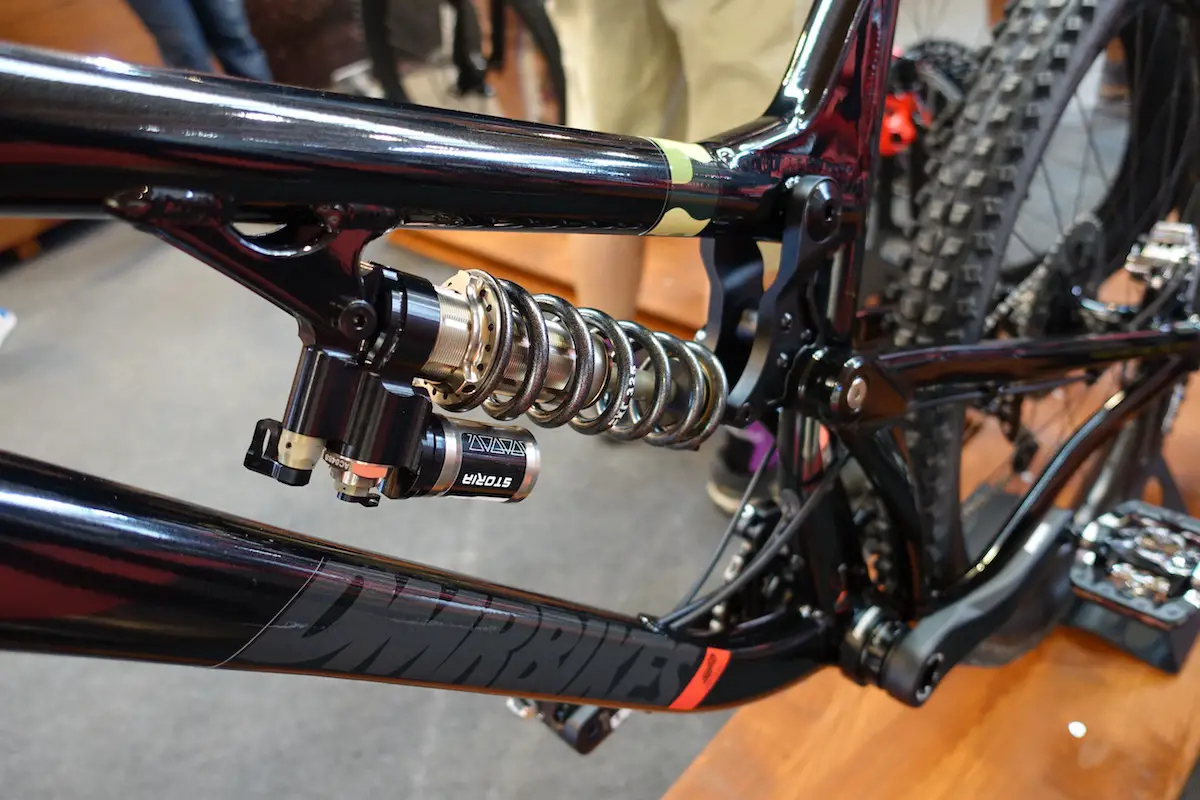DMR Bikes had plenty to be excited about at Eurobike 2017, including new pedals and new grips that we’ll get to shortly. However, most of the excitement was due to this being the first time the British brand would have a long travel full suspension bike on display for the European audience. The 160mm travel SLED was first released at the start of this year at Core Bike, and we have since received one in the office for testing. You can read our full review of the DMR SLED online right here.
However, DMR didn’t just turn up to Eurobike with the same ol’ bike (you know, because a 9 month old bike is considered ancient these days…). Although the Infrared SLED shown here looks the same as the bike we tested, there are a few changes to the spec, along with a hidden tweak that’s had a serious change to the bike’s geometry.
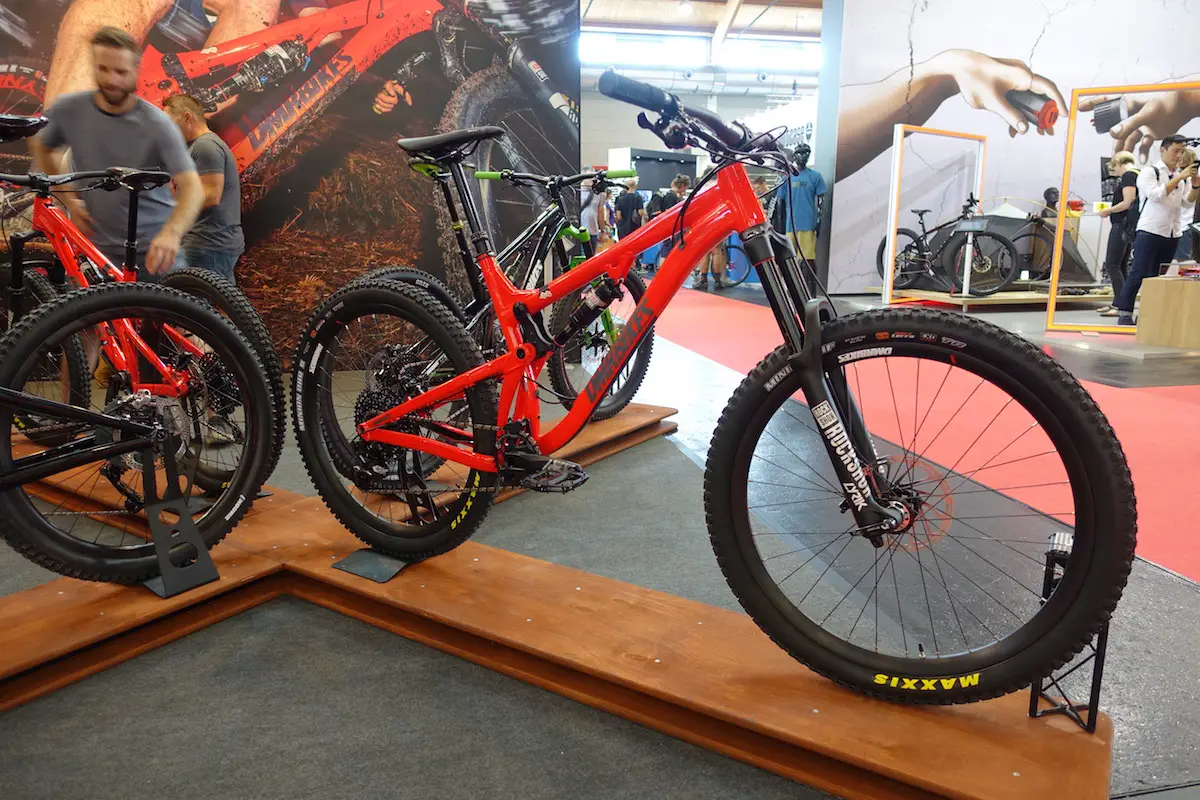
The SLED is available both as a frameset and as a complete bike. There is only one spec option for the complete bike, which is the red bike shown here that features a SRAM 1x drivetrain, DMR Zone wheels and a RockShox suspension package. While the frame remains the same, for the 2018 model year, there have been a number of changes to the specifications that aim to address some of the issues we identified during testing.
For a start, the SLED updates to a SRAM GX Eagle 1×12 drivetrain, due to the new 12-speed drivetrain having only became available after the SLED was first launched. The fork also updates to a 2018 model, and you can choose between a 160mm travel Pike, or a 170mm travel Lyrik. DMR has also upped the dropper post travel to 150mm for the X-Fusion Manic, and swapped the slippy non-locking grips to a new Deathgrip lock-on grip (shown below). The tyres have also been changed from WTB to Maxxis, with the excellent Minion DHF/DHR combo wrapping the DMR Zone wheels.
Latest Singletrack Merch
Buying and wearing our sustainable merch is another great way to support Singletrack
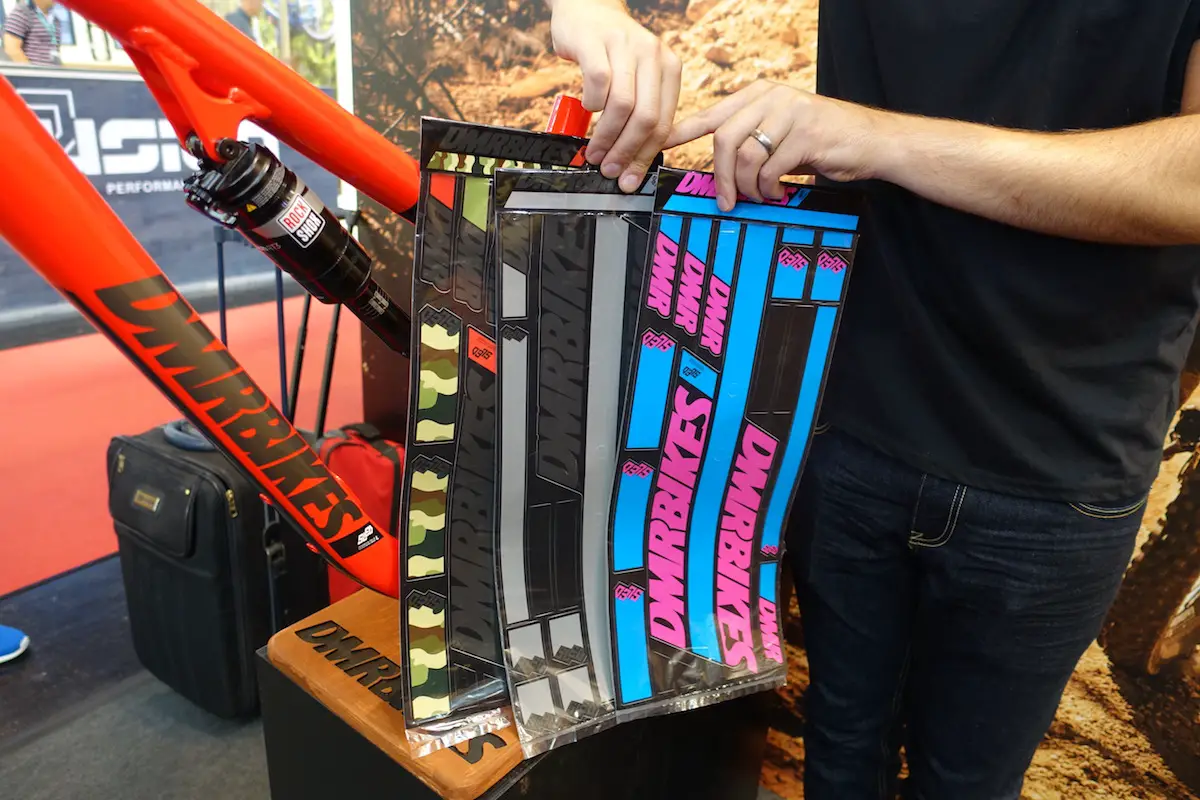
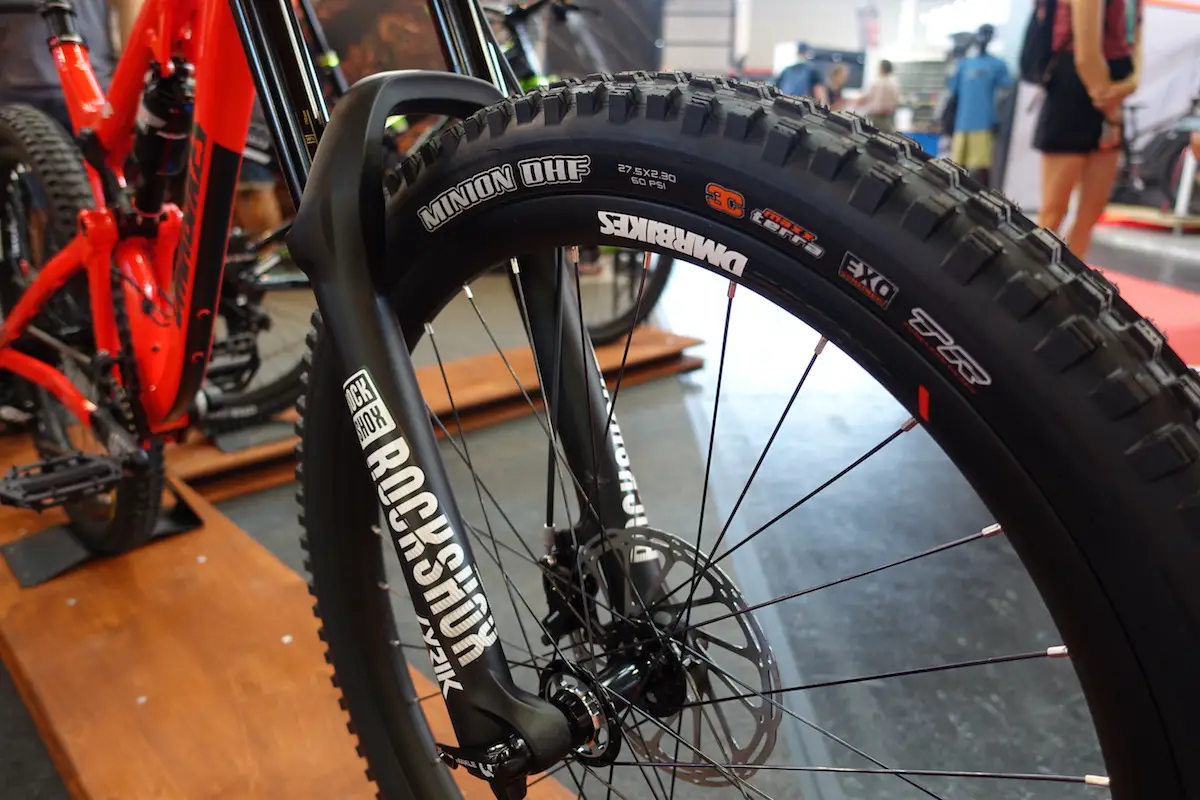
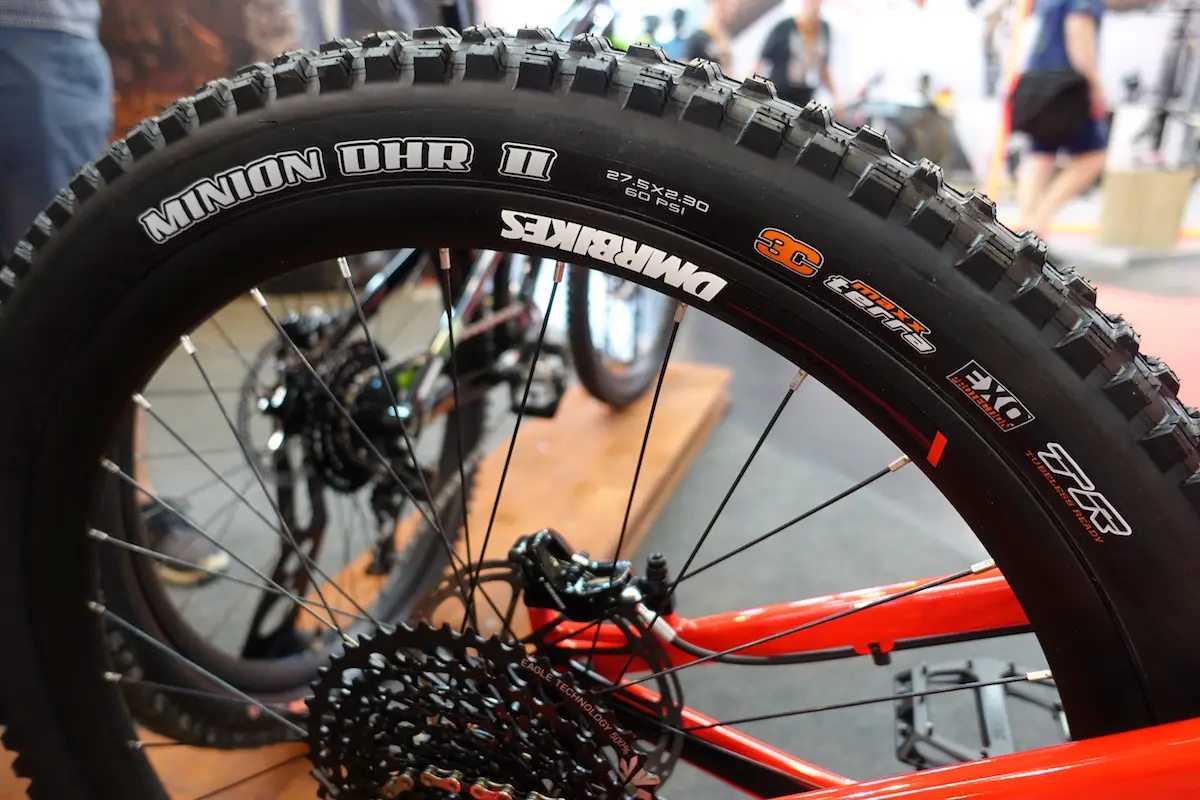
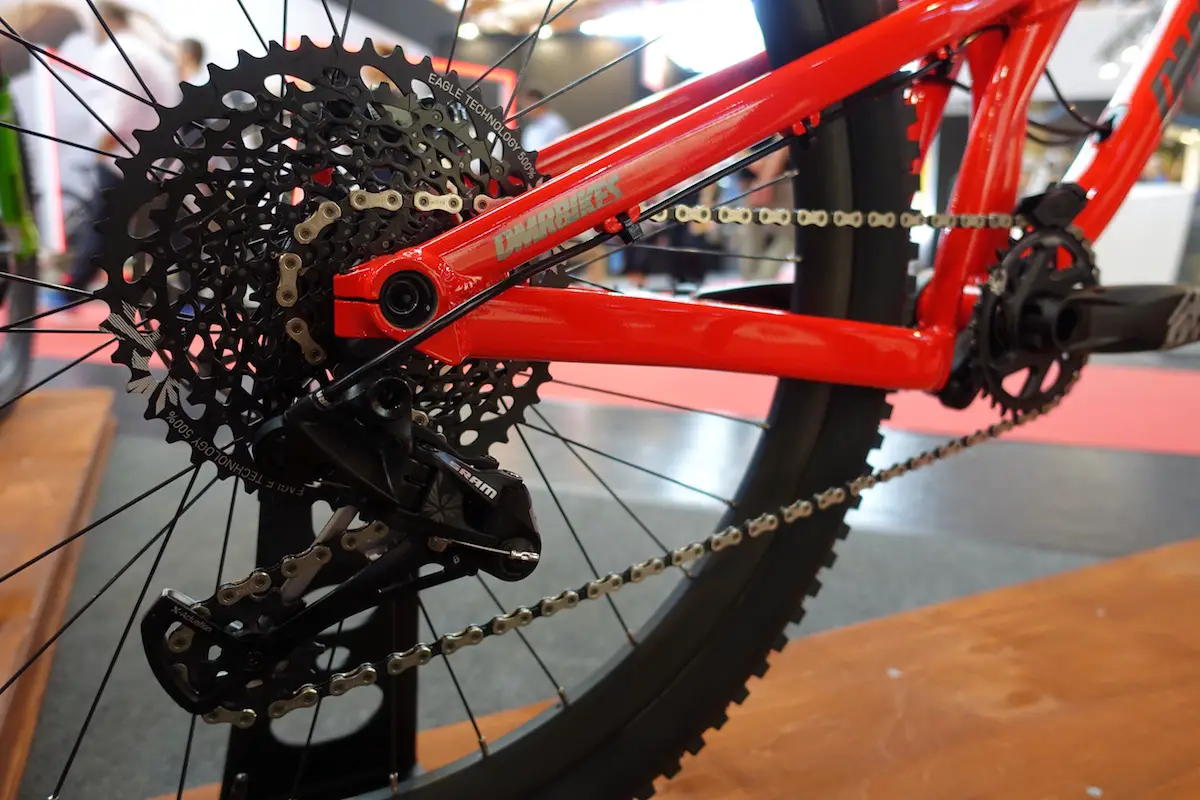
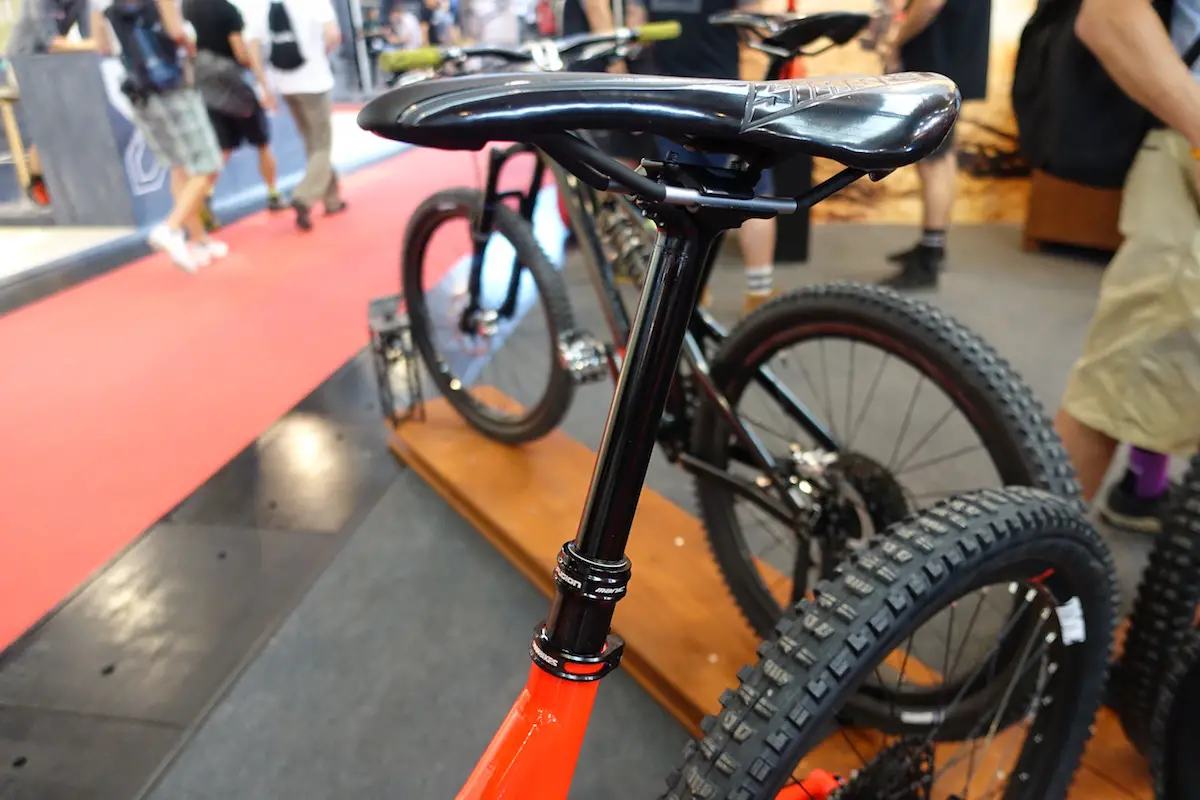
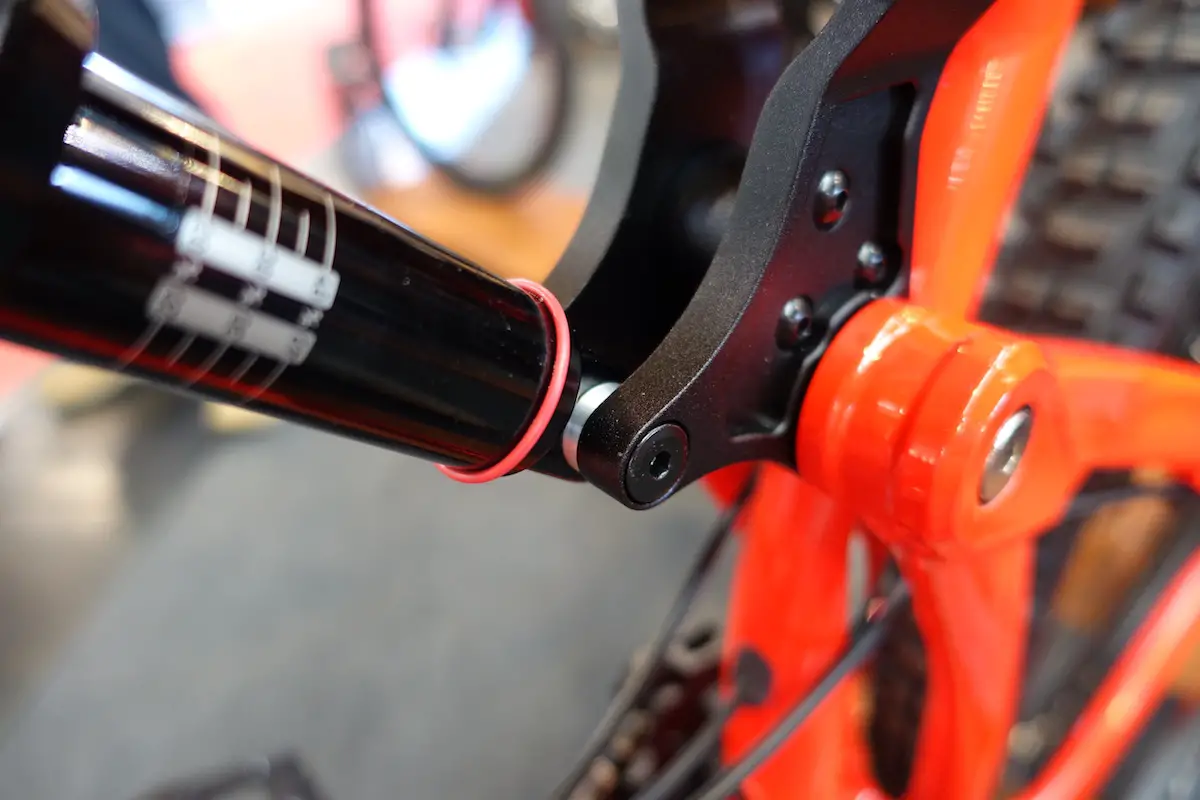
So here’s the most subtle but arguably the biggest tweak to the 2018 SLED. While we got along well with the SLED for the most part during our testing, we did have some issues with the rear suspension firming up under harder and faster hits, which seemed to be caused by drivetrain feedback as the chainstay length ‘grows’ through the middle of the travel. DMR has listened to that feedback amongst further comments from other reviewers, and has been trialling offset bushings in both the top and bottom eyelets of the rear shock in order to address the issue.
The offset bushes serve to push the rear shock further up the top tube, so that the upper linkage rotates forward ever so slightly – almost like it’s sitting into the travel further. The overall travel remains the same at 160mm, but there is slightly less chain growth by altering the shock position.
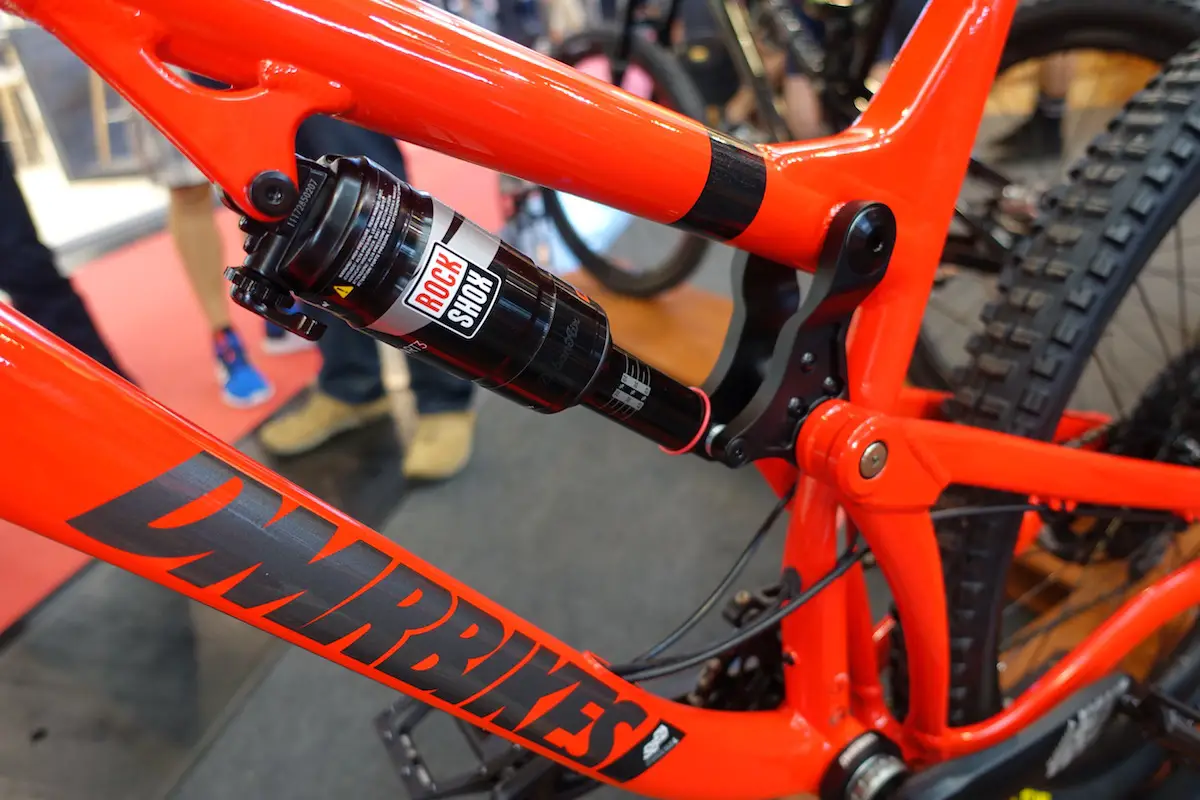
DMR states that the offset bushing not only enables a more ‘free’ feeling to the rear suspension travel by reducing the chain growth value, it also aids with slackening out the geometry too. With offset bushes used in both the top and bottom shock eyelets, the DMR SLED now sits at 64.5° head angle when mated to the 170mm travel Lyrik.
The SLED will still be available with a 160mm travel Pike, which at this stage won’t feature the offset bushes, as DMR believes the bike doesn’t need it.
